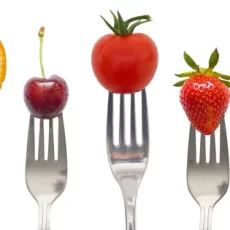Nandita Kochar
Pain is inevitable. Suffering is optional. – Haruki Murakami
The death of a loved one, the loss of a treasured job, finding oneself to be extremely sick – these are all a few examples of traumatic experiences. One finds oneself in a pool of emotions and uncertainty at the end of such situations.
However, over time, people do learn how to cope and adapt well to these life-changing situations. How does one do so? It involves resilience. Happyho also provides best Meditation and Tarot classes in Noida and Delhi NCR India area
Adversity is a fact of life. And resilience is that ineffable quality which allows some people to bounce back as strong as before, after being knocked down by an adversity. Rather than letting failures absorb them and their resolve, resilient people choose not be victims or sufferers.
They rise from the ashes .
Resilience has been described in a whole lot of ways but it really boils down to the possession of and access to a set of personal characteristics and external protective factors that an individual can use to survive or even thrive in the face of a difficulty.
Psychologists have identified some of the characteristics that make a person resilient – optimism, intelligence, easy temperament, positive self-view, self efficacy, flexible personality, good regulation of arousal and impulse, a sense of meaning, attractiveness to others and a sense of humour.
External protective factors include authoritative parents (warm and restrictive as per Diana’s model), an organised home with low conflict levels, good schooling and safe welcoming neighbourhoods (with high levels of implicit social control and engagement with prosocial peers).
Personal factors are seen as being helpful in any risk situation whereas external protective factors act as a buffer against high risk situations but have little or no effect otherwise.
It is important to note that what makes one resilient primarily is not the presence of resources but the mind and awareness of how to use them effectively. We all have been there, having met people who have all the luxury in the world but cannot stand on their two legs when faced by some turmoil.
Resilience is not some magical quality that one is blessed with overnight. It takes some serious mental work to survive and thrive in the face of hardships, to be able to keep moving towards one’s goals even after misfortune.
Pain is inevitable. Suffering is optional. – Haruki Murakami
The death of a loved one, the loss of a treasured job, finding oneself to be extremely sick – these are all a few examples of traumatic experiences. One finds oneself in a pool of emotions and uncertainty at the end of such situations.
However, over time, people do learn how to cope and adapt well to these life-changing situations. How does one do so? It involves resilience. Happyho also provides best Meditation and Tarot classes in Noida and Delhi NCR India area
Adversity is a fact of life. And resilience is that ineffable quality which allows some people to bounce back as strong as before, after being knocked down by an adversity. Rather than letting failures absorb them and their resolve, resilient people choose not be victims or sufferers.
They rise from the ashes .
Resilience has been described in a whole lot of ways but it really boils down to the possession of and access to a set of personal characteristics and external protective factors that an individual can use to survive or even thrive in the face of a difficulty.
Psychologists have identified some of the characteristics that make a person resilient – optimism, intelligence, easy temperament, positive self-view, self efficacy, flexible personality, good regulation of arousal and impulse, a sense of meaning, attractiveness to others and a sense of humour.
External protective factors include authoritative parents (warm and restrictive as per Diana’s model), an organised home with low conflict levels, good schooling and safe welcoming neighbourhoods (with high levels of implicit social control and engagement with prosocial peers).
Personal factors are seen as being helpful in any risk situation whereas external protective factors act as a buffer against high risk situations but have little or no effect otherwise.
It is important to note that what makes one resilient primarily is not the presence of resources but the mind and awareness of how to use them effectively. We all have been there, having met people who have all the luxury in the world but cannot stand on their two legs when faced by some turmoil.
Resilience is not some magical quality that one is blessed with overnight. It takes some serious mental work to survive and thrive in the face of hardships, to be able to keep moving towards one’s goals even after misfortune.
Think of resilience like taking a raft trip down the river. You are likely to encounter rapids, turns, slow water and shallows. Perseverance, trust in your abilities and a plan will allow you to work your way around the obstacles.You can climb out to rest on the banks of the river. But to get to your destination, you will have to step into the waters again. And for that, you’ll have to believe in yourself, in your resilience.





